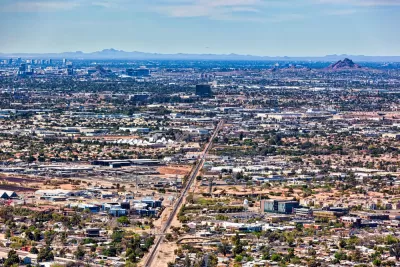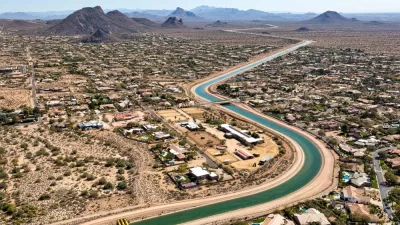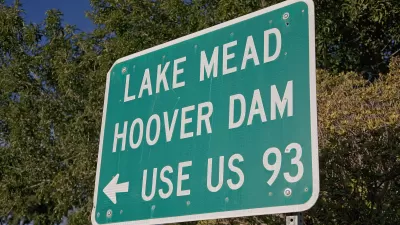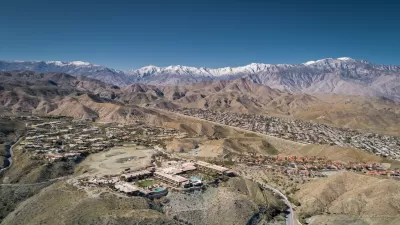Phoenix is growing, it's now America's fifth largest city, but its water supply is shrinking.

New suburbs are sprouting up all around Phoenix but new water supplies are not. "Twenty years ago, Anthem sprung out of virgin desert, a community 'masterplanned' from scratch with schools, shops, restaurants and spacious homes – many behind high walls and electronic gates – and its own country club and golf course," Joanna Walters reports for The Guardian.
The city is growing, it's now the country's fifth largest city, and that population needs water. Walters cites a Federal Bureau of Reclamation report from 2012 that says the city will experience droughts of five years or more every decade from now until 2050. But the region has been slow to act. "Greater Phoenix has not declared any water restrictions. Nor has the state government decided its official drought contingency proposal," Walters writes.
Building in the desert means bringing water from distant sources, "… Phoenix gets less than eight inches of rainfall each year; most of the water supply for central and southern Arizona is pumped from Lake Mead, fed by the Colorado river over 300 miles away," Walters reports. Bringing water uphill from that shrinking lake uses a lot of power, and though the city enjoys more than 300 days of sun a year, only between 2 to 5 percent of the state of Arizona's power comes from solar.
Meanwhile, growth continues. "Another firm wants to build a 'masterplanned community', like Anthem, south of Tucson, and modelled after the hilltop towns of Tuscany. It envisages five golf courses, a vineyard, parks, lakes and 28,000 homes," Walters reports.
FULL STORY: Plight of Phoenix: how long can the world’s 'least sustainable' city survive?

Study: Maui’s Plan to Convert Vacation Rentals to Long-Term Housing Could Cause Nearly $1 Billion Economic Loss
The plan would reduce visitor accommodation by 25,% resulting in 1,900 jobs lost.

Alabama: Trump Terminates Settlements for Black Communities Harmed By Raw Sewage
Trump deemed the landmark civil rights agreement “illegal DEI and environmental justice policy.”

Why Should We Subsidize Public Transportation?
Many public transit agencies face financial stress due to rising costs, declining fare revenue, and declining subsidies. Transit advocates must provide a strong business case for increasing public transit funding.

Paris Bike Boom Leads to Steep Drop in Air Pollution
The French city’s air quality has improved dramatically in the past 20 years, coinciding with a growth in cycling.

Why Housing Costs More to Build in California Than in Texas
Hard costs like labor and materials combined with ‘soft’ costs such as permitting make building in the San Francisco Bay Area almost three times as costly as in Texas cities.

San Diego County Sees a Rise in Urban Coyotes
San Diego County experiences a rise in urban coyotes, as sightings become prevalent throughout its urban neighbourhoods and surrounding areas.
Urban Design for Planners 1: Software Tools
This six-course series explores essential urban design concepts using open source software and equips planners with the tools they need to participate fully in the urban design process.
Planning for Universal Design
Learn the tools for implementing Universal Design in planning regulations.
Smith Gee Studio
Alamo Area Metropolitan Planning Organization
City of Santa Clarita
Institute for Housing and Urban Development Studies (IHS)
City of Grandview
Harvard GSD Executive Education
Toledo-Lucas County Plan Commissions
Salt Lake City
NYU Wagner Graduate School of Public Service





























